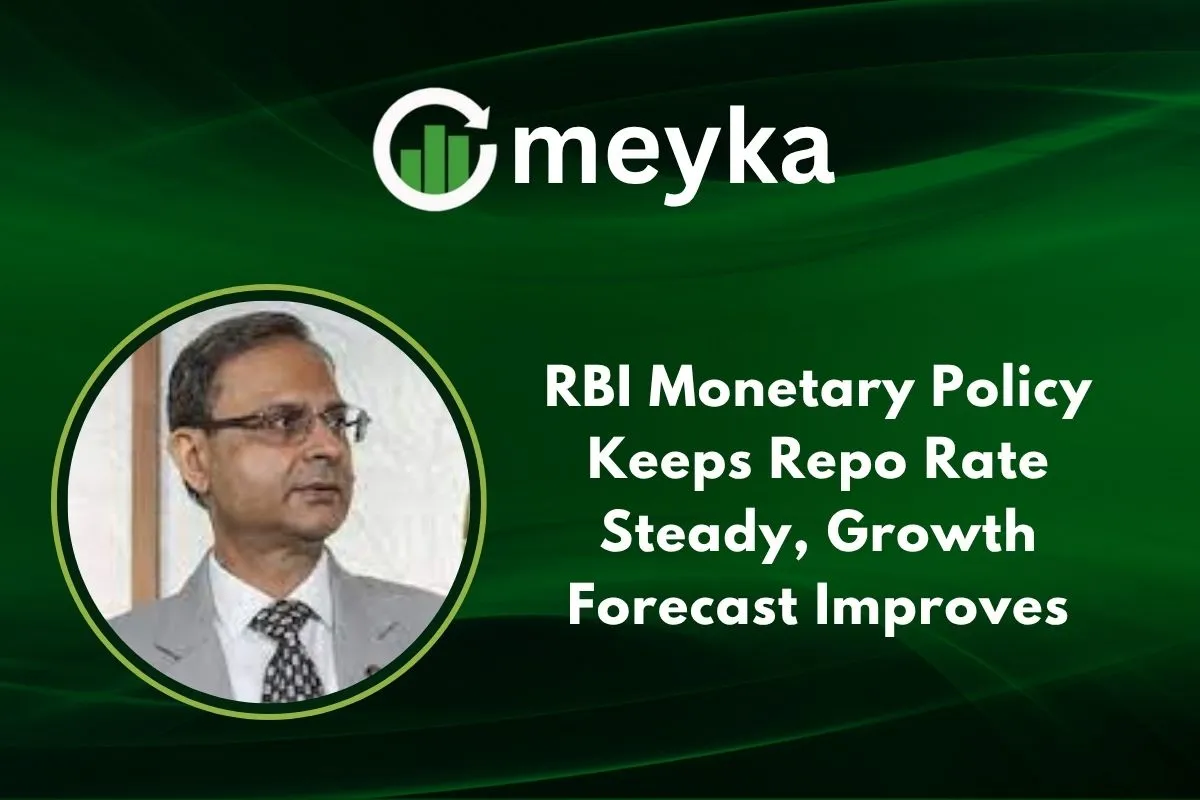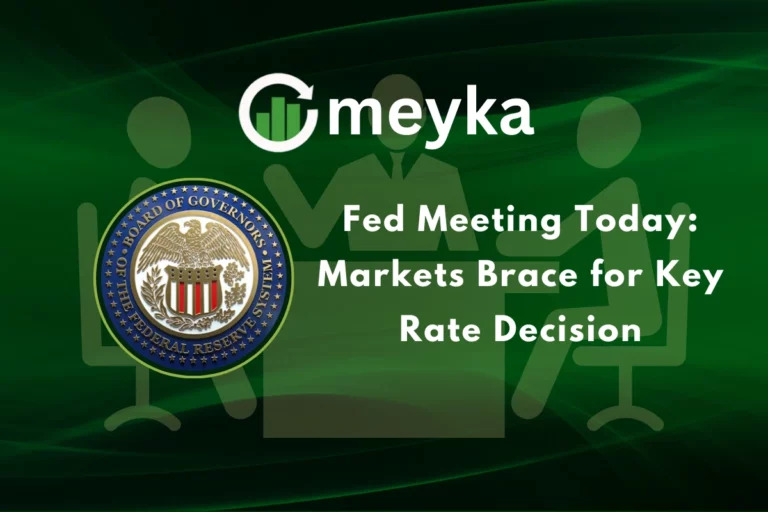RBI Monetary Policy Keeps Repo Rate Steady, Growth Forecast Improves
The Reserve Bank of India (RBI) has decided to keep the repo rate unchanged at 5.50% in its latest monetary policy meeting. This comes at a time when inflation pressures are easing and economic growth is gaining strength. We see the central bank balancing two goals: keeping prices stable and supporting the economy. We explore what the RBI’s decision means for borrowers, businesses, markets, and the overall economic outlook.
Overview of the Repo Rate Decision
The repo rate is the rate at which banks borrow short-term funds from the RBI against securities. In the recent Monetary Policy Committee (MPC) meeting (Sept 29 – Oct 1, 2025), the RBI decided unanimously to keep it at 5.50% and maintain a neutral stance. This move reflects that the RBI is neither pushing aggressively for rates down nor looking to raise them immediately.
Earlier in June 2025, the RBI had cut the repo rate by 50 basis points, bringing it to 5.50%. That cut was part of a series of easing steps earlier in the year. With those cuts already in place, the RBI now appears cautious and wants to see how the economy responds.
Growth Forecast: Upward Revision
One of the most striking changes in this policy is the upgrade in India’s growth forecast. The RBI now projects GDP growth of 6.8% for fiscal 2025–26, up from the earlier estimate of 6.5%. The first quarter of FY26 already showed strong performance, with real GDP rising about 7.8%. Key drivers include strong consumer demand, robust government spending, and resilient investment activity.
Sector-wise, services and manufacturing are contributing well. Agriculture is stable, helped by a good monsoon season. The upgrade signals that RBI is more confident in domestic momentum than before.
Inflation Outlook and Price Stability
Along with growth, RBI has revised the inflation forecast downward. It expects CPI inflation to be around 2.6% in FY26, down from the previous 3.1%. RBI expects lower inflation, especially in Q2 and Q3, estimating about 1.8% in those quarters. However, it sees inflation creeping up later in the year, possibly crossing 4% in Q4.
While headline inflation is low, underlying or “core” inflation (excluding volatile food and fuel) is around 4.2%. The RBI will closely monitor price pressures and global commodity trends to keep inflation in check.
Impact on Borrowers and Lenders
For borrowers, this decision means current interest rates are stable. Home loans, auto loans, and personal loans won’t see abrupt changes now. Lenders have already incorporated prior rate cuts into their lending rates. Rate transmission may take time. Banks often adjust loan rates gradually. Some borrowers on floating rates might still see small changes.
Credit growth in India is healthy. With a lower cost of capital from earlier cuts, banks are more willing to lend, provided credit quality remains good. Consumers may feel some relief, lower inflation helps their real incomes, and businesses might get better access to credit under favorable terms.
Implications for Industry and Businesses
Because borrowing costs are stable, companies can plan investment and expansion with more certainty. Many firms will see the cost of capital as acceptable. Manufacturers may benefit, especially since demand is improving. For sectors that rely on credit (like construction, infrastructure, and real estate), conditions are more favorable.
MSMEs (micro, small, and medium enterprises) often live or die by access to credit. Stable rates and easier loans help them grow. However, global risks, like trade tensions, input costs, and supply chain disruptions, still matter. Businesses will watch those closely.
Effect on Financial Markets
Financial markets responded positively to the RBI’s announcement. The rupee strengthened, ending the day at ₹ 88.69 per USD, its best in two weeks. Stock markets also rose sharply. Banking stocks led the gains, reflecting improved investor sentiment. Bond yields moved lower in many cases, as investors banked on stable rates and the possibility of further easing.
Foreign portfolio flows improved, as global interest rates in some markets cooled and India’s outlook looked more stable.
Global Economic Context
Globally, many central banks are still fighting inflation. The US Federal Reserve and European Central Bank are closely watched for cues. Commodity prices, especially oil and metals, are rising and adding risk. This could push inflation back in some economies. Geopolitical tensions, trade disputes, and supply disruptions remain threats. RBI must keep these in mind while setting policy. In this context, the RBI’s decision to pause is conservative, allowing flexibility against external shocks.
Outlook for the Banking and Financial Sector
System liquidity is in surplus. RBI will absorb excess funds via instruments like variable rate reverse repos. Credit demand looks good. With growth improved, more businesses and consumers may borrow.
On regulation, RBI will continue focusing on financial stability, managing non-performing assets, ensuring capital adequacy, and so on. Digital finance and improved financial inclusion remain priorities. Technology and digital banking will play strong roles in reaching underserved populations.
Conclusion
The RBI’s decision to keep the repo rate unchanged reflects caution and confidence at once. With inflation under control and growth momentum rising, it is choosing to maintain stability.
We see a balanced approach: not too aggressive, not too passive. The upgraded growth forecast and lower inflation estimates make space for careful steps ahead. For borrowers, markets, and businesses, this gives a breathing space. The monetary environment is steady, but those watching global cues must also stay alert.
If inflation remains benign and growth stays firm, future moves, whether cuts or tweaks, will be driven by data. Until then, steady is the watchword in RBI’s monetary policy.
FAQS:
Central banks use three main tools. The first is the repo rate, which controls borrowing costs for banks. The second is the cash reserve ratio. The third is open market operations.
The main goal is to keep the economy stable. It tries to control inflation, support growth, and make sure enough money flows into the financial system without causing problems.
If the RBI lowers the repo rate, banks can borrow money at cheaper rates. This may lead to lower loan interest for people and encourage more spending and business growth.
Disclaimer:
This content is for informational purposes only and is not financial advice. Always conduct your research.






